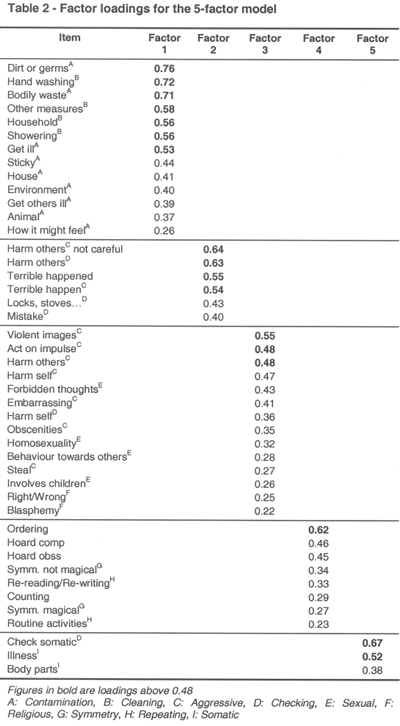OBJECTIVE: There is increasing evidence that the symptoms of obsessive-compulsive disorder lie on discrete dimensions. Relatively little work has, however, explored the relationship between such factors and response to pharmacotherapy. METHOD: Data from a multi-site randomized placebo-controlled study of citalopram in obsessive-compulsive disorder were analyzed. Factor analysis of individual items and symptom categories of the Yale-Brown Obsessive-Compulsive Scale Checklist were undertaken, and the impact of symptom dimensions on treatment outcomes was analysed. RESULTS: Factor analysis of Yale-Brown Obsessive-Compulsive Scale Checklist individual items yielded 5 factors (contamination/cleaning, harm/checking, aggressive/sexual/religious, hoarding/symmetry, and somatic/hypochondriacal). Hoarding/symmetry was associated with male gender, longer duration of obsessive-compulsive disorder and early onset, whereas contamination/cleaning was associated with female gender. Citalopram was more effective than placebo, but high scores on the symmetry/hoarding and contamination/cleaning subscales predicted worse outcome at the end of study while high scores on the aggressive/religious/sexual subscale predicted better outcome. Factor analysis of Yale-Brown Obsessive-Compulsive Scale Checklist symptom clusters yielded a 4 factor solution, but confirmed that symmetry/ordering was associated with male gender, early onset, and long duration of obsessive-compulsive disorder while high scores on the hoarding subscale predicted worse response to pharmacotherapy. CONCLUSION: Citalopram shows good efficacy across the range of obsessive-compulsive disorder symptom dimensions. The relatively worse response of symmetry/hoarding to a selective serotonin reuptake inhibitor is consistent with other evidence that this symptom dimension is mediated by the dopamine system. There may be associations between symmetry/hoarding, male gender, early onset, tics, and particular genetic variants; further work is, however, needed to delineate fully obsessive-compulsive disorder subtypes and their underlying neurobiology.
Obsessive-compulsive disorder; Yale-Brown Obsessive-Compulsive Scale; Citalopram; Serotonin; Serotonin uptake inhibitors



